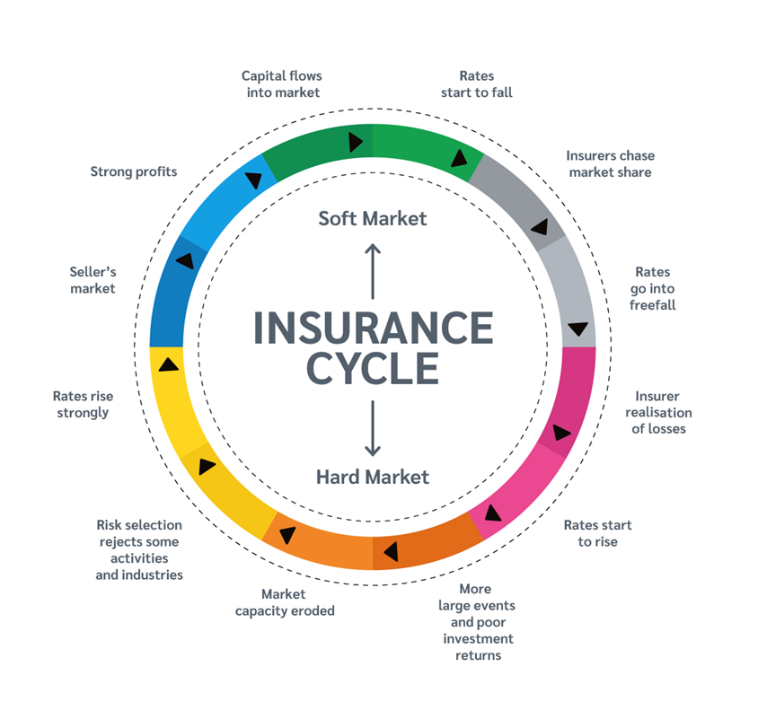In this article, we will talk about the insurance industry as it’s considered the biggest one in the world. It involves many fields like Life, Reinsurance, and Property & Casualty Insurance. Those fields make up a significant portion of this economy, which is why they are essential to focus and understanding.
The Reinsurance
In the insurance industry, reinsurance is an effective way to manage risk. It can mitigate the impact of catastrophic loss events, allow insurers to reduce underwriting and agency risk, or increase their capacity.
As a result, the United States reinsurance sector remains an important source of capacity for domestic insurers.
However, as in other markets, the industry faces some challenges. FSB has been developing a policy to address small insurers. At the same time, the reinsurance contract is generally governed by general contract law. And the details vary from company to company.
Some reasons insurers purchase reinsurance include the following:
- Spreading risk.
- Preventing underwriting risks.
- Reducing costs of capital.
- Improving the underwriting performance of the ceding companies.
- Another reason is to avoid financial strain due to rapid portfolio growth.
The reinsurance companies take over the underwriting of the cedent in exchange for an insurance premium. This protects the cedent against significant losses and establishes confidence in the insurance market.
It may also involve retrocession. Why!? Because: The Retrocession consists of a reinsurance company transferring a part of the cedent’s risk to another reinsurer. But while this can help to lower the insurance production costs, it can also create a considerable risk.
The Life insurance
The life insurance industry has changed drastically over the past decade. Health concerns, digital adoption, and a pandemic have accelerated the industry’s growth. As a result, it is a challenging environment for new agents.
Insurers have advanced in several areas, including leveraging artificial intelligence and advanced analytics. They have also moved towards accelerated underwriting, which enables nearly auto-issuance of most policies. However, the resulting growth in premiums could have been more robust. This year, insurers paid out more than $818 billion in dividends.
One way to help consumers make more intelligent choices is to provide value-added services. For example, annuities are a vital component of life insurance. A fixed or variable income stream is offered for a policyholder’s lifetime.
The Health insurance
Health insurance is a way of compensating for medical expenses. Individuals, families, or businesses can purchase it. Typically, health coverage is offered by private providers. However, government-run schemes also exist in certain regions. Some examples of such policies include Medicaid and Medicare.
The global health insurance market will be valued at around USD 1.98 trillion in 2020. This is expected to rise steadily at 6.6% over the next four years.
The awareness increasing of health insurance, the need to protect against catastrophic medical costs, and the growing number of offerings incorporating evolved healthcare policies are among the factors contributing to the market’s growth. In addition, the increasing prevalence of chronic diseases and improved claim management services are also boosting the market.
Property and casualty insurance companies
Property and casualty companies in the insurance industry protect customers’ properties and businesses from loss or damage. They offer several policies, including auto, home, and marine. In addition to traditional property and casualty policies, these insurers also provide liability coverage.

The property and casualty insurance industry are essential to today’s economic landscape. The global insurance industry generates approximately $5 trillion in annual revenue. It covers many risks, including car accidents, medical expenses, and property losses. However, the industry faces several challenges. These include emerging risks, pandemics, intangible assets, and artificial hazards.
Natural disasters have contributed to insurance losses, causing hundreds of billions of dollars in claims. This year, the global P&C industry is estimated to have generated $1.6 trillion in premiums.
The industry needs to evolve to better accommodate customers’ needs in response to the increased risk of natural disasters. Retail and commercial insurers must develop new value propositions, distribution channels, and products. Moreover, they will need to adopt technology and digital processes.
Underwriting cycle
The underwriting cycle describes a periodic swing in underwriting profitability in the insurance industry. The process represents the fluctuation in premiums and terms of business between hard and soft markets.

One of the main reasons for the cycle is the uncertainty of future losses. The insurance industry is competitive, and many insurers place a high value on short-term profits over long-term stability. This is a problem.
In challenging markets, there is pressure on insurance companies to keep up with the premium volume. To counter this, they may consider limiting premium increases. They can also get down the terms of their policies. However, this is only one of the ways the cycle affects the insurer’s business.



